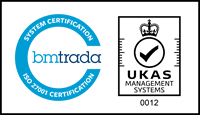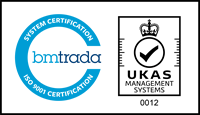Blog
Sage: How to use financial wellbeing to help with the cost of living crisis
Benefits | Wellness | Sage Employee Benefits | 5-minute read
Posted on: Thursday October 27, 2022

We’re all aware of the rising cost of living these days, especially when it comes to essentials like food, fuel, and energy bills.
Everyone’s circumstances are different, but employees across the income spectrum may have to tighten their belts, whilst the lowest paid may be at risk of real hardship.
Financial wellbeing benefits
In this context, financial wellbeing benefits are needed more than ever. As an employer, you can provide guidance to help reduce financial stress, and benefits/products that provide better value than employees could access as individuals.
We are seeing an acknowledgement of the links between financial, mental and physical wellbeing – for example, money worries contributing to mental health problems, which can also manifest in physical symptoms. So for maximum effect, your financial wellbeing provision should sit within a holistic employee wellbeing proposition.
Include financial education within your wellbeing strategy
This will help reduce employee financial stress alongside helping them to build confidence in setting and achieving their own financial goals.
Include in your leaning and development offering a generic financial planning and budgeting module; it can be complimentary to more business-focused content.
Choose the right offering and channels
It’s not new to have employees in their twenties and their sixties working together, but their life experience, values and attitudes are so very different. With the rise in retirement age facilitating baby boomers putting off their retirement, alongside millennials on track to make up half of the workforce in just two years’ time, employers will play a part in the financial wellbeing of the growing millennial workforce whose finances are so different from those of the generations preceding them.
So ensure you offer a financial wellbeing package that offers choices for different life stages. This is more likely to deliver results than a narrow or rigid offering. Also consider communications channel - 70% of millennials say they’d like financial advice to be delivered digitally.
Pensions
Ensure your pension collateral is easy to understand and use technical language sparingly. If the scheme is provided by an external partner, collaborate with them to hold regular savings/retirement seminars - helping employees understand and engage with their pension savings early provides great support both emotionally and financially.
Tax
Not the easiest thing to understand! HRMC do try hard to give clear explanations on their website and/or correspondence, but there is an opportunity for payroll/finance to proactively reach out – especially with new starters and/or where there is an impactful change of tax code – to offer any support should further explanations be of value.
Be aware of signs that may indicate employees are struggling financially
Absenteeism and increased sickness, employee engagement and satisfaction scores, feedback from staff via surveys and discussions, engagement with your financial wellness programme, changes in productivity and performance, requests for out of cycle pay increases / subs from next due wage or salary payments.
For more help on supporting your employees with money worries speak to your account manager at [email protected]
Why your Employee Value Proposition is more than just an HR tool
At Hapi, we know that a strong employee value proposition (EVP) is essential to building engagement that lasts - but it’s not just about attracting talent.
Posted on: 9 July 2025 by Jenny HInde, Chief People Officer
Cut costs, not culture: smarter benefits for smarter budgets
The secret to humanising the workplace and individualising reward lies in a more sophisticated approach to segmentation, and that applies as much to benefits as it does to pay.
Posted on: 25 June 2025 by Andrew Walker, New Business Development Director
Minimum Wage, Maximum Quandary
With the April wage and NI increases behind us, employers and HR teams are now reassessing reward strategies. By taking a targeted, tech-enabled approach and strengthening communication, it’s possible to maximise budgets while still supporting, motivating, and retaining talent.
Posted on: 12 June 2025






